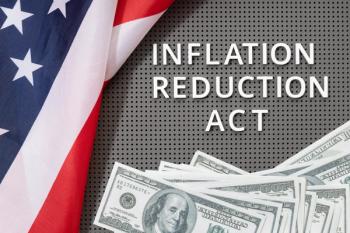
Medicare Plans Face Higher Liability From Cap on Out-of-Pocket Drug Costs
To help Medicare plans better manage members with high drug expenses, Prime Therapeutics has launched an AI-driven tool to help plans identify members likely to experience increases in pharmacy costs.
The Inflation Reduction Act’s $2,000 cap on out-of-pocket costs for prescription drugs is expected to change Medicare beneficiaries’ use of medications, potentially leading to different utilization patterns that plans must learn to navigate.
Plans must now absorb costs that previously fell to members, creating sustainability challenges while they continue to maintain competitive coverage across service areas, Jackie Jacobson, senior director of the Government Programs Center of Excellence at Prime Therapeutics, said in a recent interview.
“The Inflation Reduction Act is moving a lot more of the liability onto health plans,” she said. “Once somebody has hit their out-of-pocket max and they no longer have cost sharing, there may be different behaviors for members if they don’t have any copays or coinsurance. [Plans] have to navigate how to provide the best coverage and opportunities while still supporting programs that can help the plans best manage high-cost members in particular.”
The Inflation Reduction Act established a cap on out-of-pocket spending for prescription drugs. In 2025, the cap is $2,000 for beneficiaries under Medicare Part D, which in effect eliminates the catastrophic coverage phase.
Anticipating higher costs, some plans have raised premiums. An analysis done in November 2024 by KFF found that the
To better support Medicare plans, Prime has launched an AI-driven tool to help identify members likely to experience significant increases in pharmacy costs. The Predictive Model is a standalone product launched earlier this year that analyzes member data to forecast future pharmaceutical expenditures. The model incorporates multiple data sources to identify at-risk members. Prime looks at 67 data sets, including eligibility information, CMS-provided data (e.g., Low Income Subsidy, Dual Eligibility), pharmacy claims data, medical data, social determinants of health data from publicly available sources, zip code-derived income and education data.
For Medicare Advantage plans that include both medical and prescription drug benefits, the system analyzes medical diagnoses, severity changes, and prescribing patterns. The model also examines pharmacy encounter data and prescription adherence patterns to paint a comprehensive picture of member health trajectories.
Prime officials said pilot programs are in place with several clients to work with them on data utilization and optimization. Prime also provides guidance to clients on how to best use the data, including suggested ways to filter and interpret the data in ways that are most effective. This can include looking at drug therapy optimization, HEDIS impacts, social determinants of health concerns, and risk factor gap identification, which was the reason this model was developed.
Based on initial feedback from clients, Jacobson said Prime is making enhancements to the program, specifically to help clients understand what they can do to address higher costs. Some clients, for example, have enrolled identified members into a care management program to better engage with patients.
Company officials also said they are looking at how they can leverage this data across other parts of the business. The PBM is working with a client to develop the model specifically for the Medicaid population.
Newsletter
Get the latest industry news, event updates, and more from Managed healthcare Executive.






















































